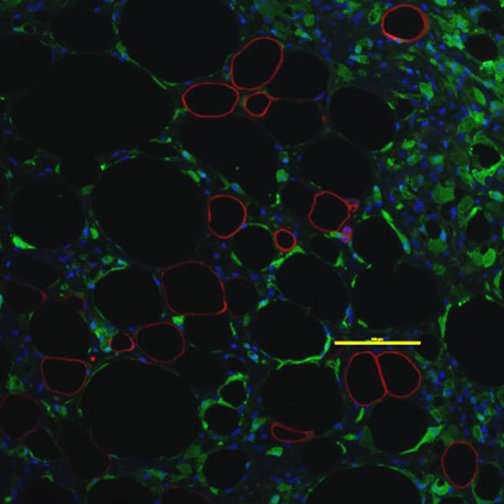Technology to drive advances in obesity-related diseases

For the first time, researchers led by Frank Lau, MD, Assistant Professor of Clinical Surgery at LSU Health New Orleans, have successfully kept white fat tissue alive outside of the body for up to eight weeks. This breakthrough will pave the way for research advances improving treatment or prevention of such diseases as obesity, diabetes, heart disease, stroke, cancer and others associated with white adipose tissue. Details are published as an Instant Online Article by the journal Tissue Engineering Part C: Methods, available here.
The paper describes a tissue-engineered microstructure called Sandwiched White Adipose Tissue, or "SWAT" for short. White adipose tissue (WAT) is a type of human fat that is strongly associated with several life-threatening illnesses. An ongoing hurdle for scientists has been developing a technique for the long-term culture of WAT. In SWAT, WAT is cultured in a three-dimensional, multicellular environment, and these conditions faithfully mimic those of the human body. In SWAT, WAT is viable in culture for up to eight weeks, and during this time frame, it maintains crucial cellular qualities and whole-tissue functioning.
"We are the first group in the world to keep human fat alive outside of the body for several weeks," notes Dr. Lau, who is also Surgical Director of Regenerative Medicine at LSU Health New Orleans School of Medicine. "This isn't just a major breakthrough for our lab, but also for obesity and fat research. SWAT holds great potential for anti-obesity drug screening, new research into cancer-obesity interactions and many basic experiments regarding fat physiology."
The research validates SWAT as the first primary human White Adipose Tissue Microphysiological System against standards established by the National Institutes of Health. Its attributes position SWAT as a powerful tool for the study of WAT physiology, pathophysiology, personalized medicine, and pharmaceutical development.
According to the Centers for Disease Control and Prevention, 36.5% of U.S. adults have obesity. Obesity-related conditions include heart disease, stroke, type 2 diabetes and certain types of cancer, some of the leading causes of preventable death.
According to the State of Obesity, the estimated annual medical costs of obesity in the U.S. ranges from $147 billion to nearly $210 billion.
More information: Frank H Lau et al, Sandwiched White Adipose Tissue: A Novel Microphysiological System of Human Adipose Tissue, Tissue Engineering Part C: Methods (2017). DOI: 10.1089/ten.TEC.2017.0339



















